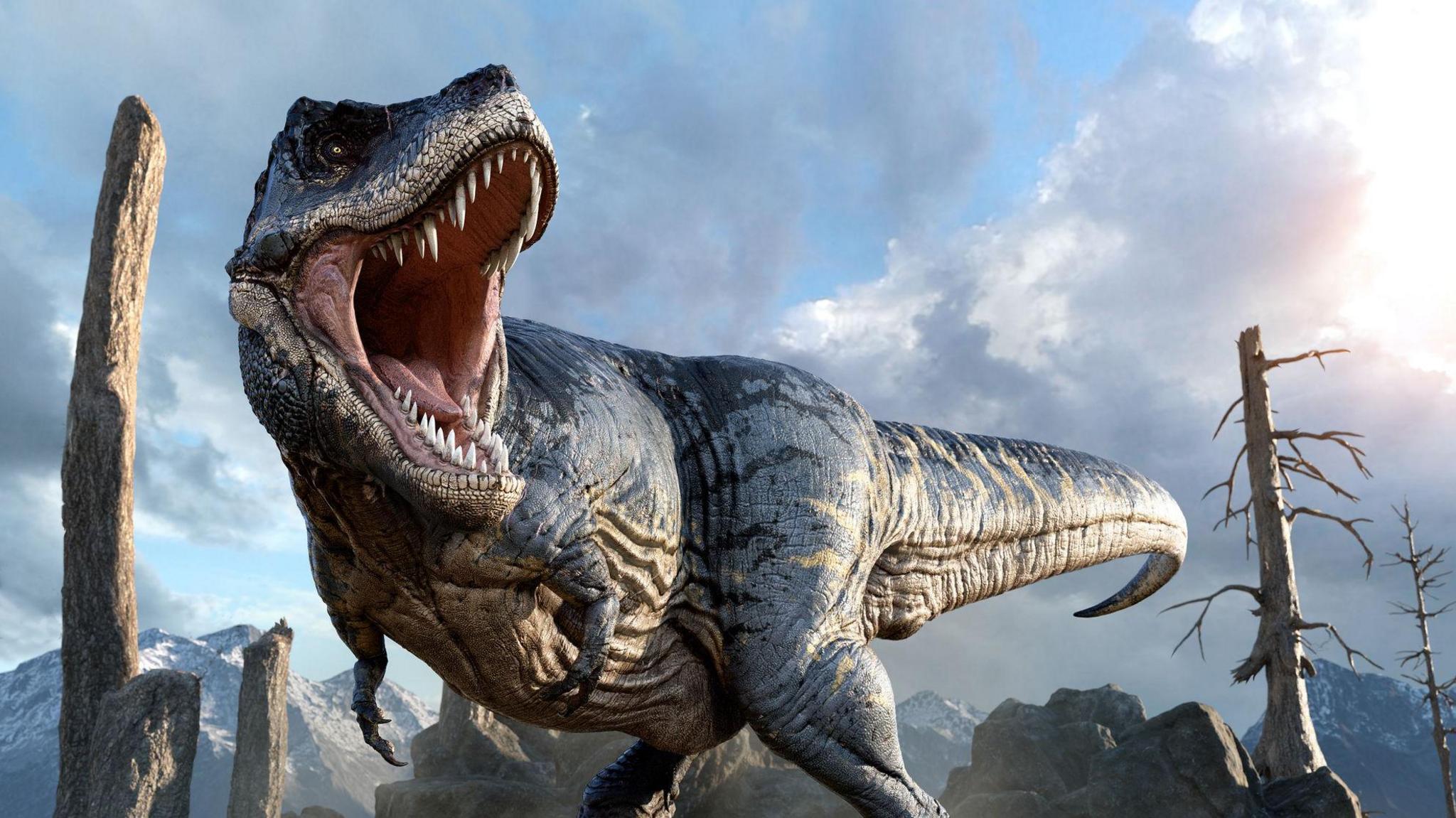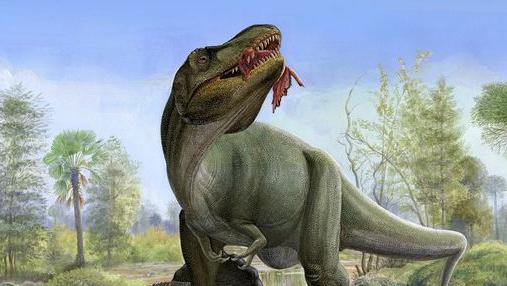Some gigantic dinosaurs had weak bites scientists say

- Published
When you think of giant, meat-eating dinosaurs that use to roam the Earth, you probably imagine them to have had big, powerful jaws to munch on their prey.
However, it turns out that might not always have been the case.
Experts looked at the bite strengths of 18 different species of huge dinosaurs.
They found that a number of the prehistoric predators had much weaker bites than previously thought.
More like this
- Published8 July
- Published25 June
What did scientists discover?

The research was carried out by experts at the University of Bristol.
They team decided to take a closer look at skulls from 18 known species of huge meat-eating theropod, dinosaurs that walked on two legs.
The team used 3D technologies including various scans in order to measure the bite strength of the creatures.
They found that while some theropods such as the Tyrannosaurus rex had skulls which were perfectly designed for powerful, crushing bites - that wasn't always the case.
Other dinosaurs, including spinosaurs and allosaurs, became giants while maintaining weaker bites more suited for ripping the flesh of their prey.
Dr Andre Rowe, from at the University of Bristol, who was involved with the study explained: "I tend to compare Allosaurus to a modern komodo dragon in terms of feeding style.
"Large tyrannosaur skulls were instead optimised like modern crocodiles with high bite forces that crushed prey," he added.
The team said their research suggests that meat-eating dinosaurs followed different evolutionary paths, which lead to a wider range of feeding styles than previously thought.
